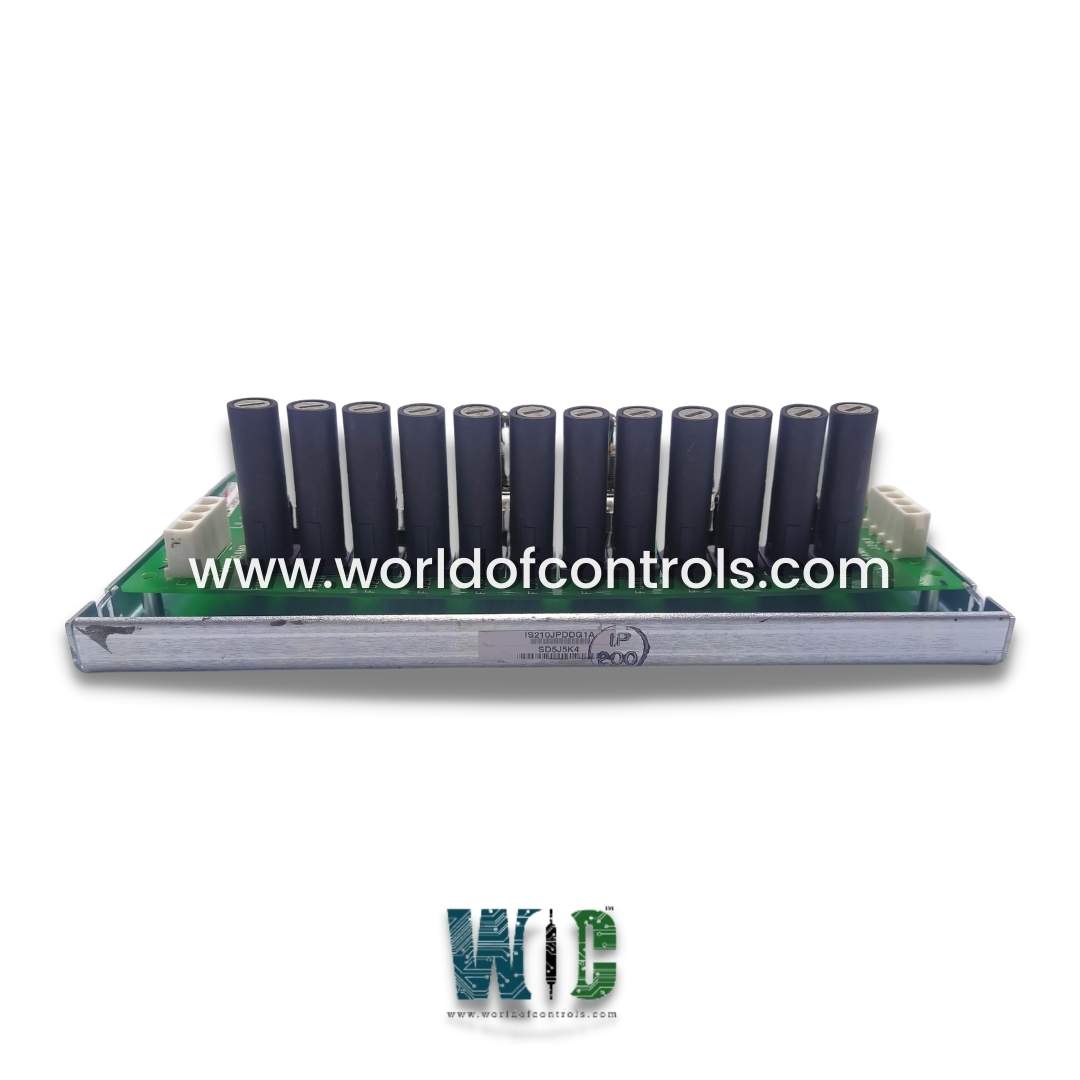
World Of Controls understands the criticality of your requirement and works towards reducing the lead time as much as possible.
IS210JPDDG4A - DC Power Distribution Board is available in stock which ships the same day.
IS210JPDDG4A - DC Power Distribution Board comes in UNUSED as well as REBUILT condition.
To avail our best deals for IS210JPDDG4A - DC Power Distribution Board, contact us and we will get back to you within 24 hours.
SPECIFICATIONS:
Part Number: IS210JPDDG4A
Manufacturer: General Electric
Series: Mark VIe
Product Type: DC Power Distribution Board
Number of channels: 24
Power supply voltage: 125 V dc
Voltage Range: 18 - 32 VDC
Mounting: DIN-rail mounting
Technology: Surface mount
Operating temperature: -30 to 65°C
Size: 33.02 cm high x 17.8 cm
Repair: 3-7 Day
Availability: In Stock
Country of Origin: United States
Manual: GEH-6721L
FUNCTIONAL DESCRIPTION:
IS210JPDDG4A is a DC Power Distribution Board manufactured and designed by General Electric as part of the Mark VIe Series used in GE Distributed Gas Turbine Control Systems. The JPDD board offers branch circuit protection, power isolation, and dc power distribution for control or input/output functions that need 125 V, 48 V, or 24 V of dc power. Contact wetting dc relay and solenoid control power are typical applications. To show whether the output voltage is there, each output has a bulb, a switch, and a fuse. Power distribution to the I/O packs is not intended for JPDD. Fuse sizes are synchronized with the system wiring and connector ratings by JPDDG1. Fuse ratings that are synchronized with a particular application are utilized in JPDDG2 and G3. There are two distinct fuse sizes available to suit regional fuse preferences.
INSTALLATION:
JPDD is mounted on a vertical DIN rail and is held in place by a plastic holder. A ground line from TB1 to the system ground must be supplied when installing the JPDD. For the metal switch bodies, this establishes a ground path. There is only one voltage level available at any given moment for the power input, which can be 24 V, 48 V, or 125 V dc. Never combine different voltages. See the circuit diagram for cable destinations. System ground should be linked to TB1.
OPERATION:
The distribution of the 125 Vdc, 48 Vdc, or 24 Vdc power in JPDD and how it gets to the TRLY and TBCI boards are depicted in the following diagram. A single branch circuit of the Main Power Distribution Module can supply power to several JPDD boards. A nominal power input of 125 V DC, 48 V DC, or 24 V DC is possible. For 125 V dc power, two 2-Pin Mate-N-Lok connections are included. One connector is used for input power, while the other can be used to daisy chain another JPDD board to receive 125 V dc power. For 24/48 V dc power, two 4-pin Mate-N-Lok connections are included. These serve purposes akin to those of the previously mentioned 2-pin connectors.
CONFIGURATION:
This board can be used to give specific branch circuit ratings by using different fuse ratings. The Bussmann ABC series of fuses, which have ratings ranging from 14 A to 15 A, is a common series that is compatible with this board. Fuses more than 15 A must not be utilized with this board. The correct fuse must be inserted into each branch circuit in the board layout if different fuse ratings are being used.
WOC has the largest stock of OEM replacement parts for GE Drive Control Systems. We can also repair your faulty boards and supply unused and rebuilt boards backed up with a warranty. Our team of experts is available round the clock to support your OEM needs. Our team of experts at WOC is happy to assist you with any of your automation requirements. For pricing and availability on parts and repairs, kindly contact our team by phone or email.
What factors should be considered when selecting a DC power distribution board?
Factors to consider include the input voltage and current ratings compatible with the power source, the number and types of output terminals required for connecting devices, the size and form factor of the board to fit within the application's space constraints, and the type of overcurrent protection mechanism suitable for the connected devices.
Can DC power distribution boards handle different voltage levels?
Some DC power distribution boards are designed to handle multiple voltage levels by incorporating voltage regulation or by providing separate output terminals for different voltage ranges. It's essential to select a distribution board that matches the voltage requirements of the connected devices.
How can I determine the appropriate size and capacity of a DC power distribution board for my application?
The size and capacity of the distribution board depend on factors such as the total power consumption of the connected devices, the maximum current draw of each device, and any potential future expansions. Calculating the total power requirements and ensuring that the distribution board's current rating exceeds the sum of the connected device currents will help determine the appropriate size and capacity.